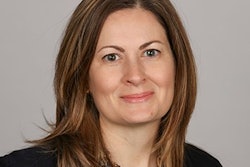This spring, Active Minds and the National Resource Center for The First-Year Experience and Students in Transition partnered to launch a survey that analyzed the inclusion of mental health practices and programs within the first-year experience (FYE) at postsecondary institutions.
Of the 48 respondents, more than half revealed that mental health content had been integrated into FYE initiatives only slightly or not at all. Yet, seven million students across the country meet the criteria for a clinically significant mental health problem, according to the study.
“For us, that was troubling that it was not integrated but understand the constraints of a first-year experience program,” said Amy Gatto, senior program manager at Active Minds, a nonprofit mental health organization. “Where does it fit, how does it fit, whose responsibility is it?”
Schools shared their stories about working with counselors or community health organizations as well as establishing student-led mental health programming. The barriers to incorporating mental health were also revealed, such as limited time in the first-year curriculum.
 Amy Gatto
Amy GattoAfter analyzing the results of the survey, a guide was created to highlight successful first-year mental health initiatives for first-year students at institutions across the nation.
The guide, “Supporting the Whole Student: Promising Practices for College and University Staff to Integrate Mental Health Promotion in the First College Year,” focused on programs at Denison University, University of Richmond (UR), University of South Florida (USF), California State University at Long Beach (CSULB) and Skidmore College.
At Denison, first-year students participate in student and faculty-led advising circles and weekly small-group meetings to learn about the available mental health resources on campus. University of Richmond added it into the curriculum, with the requirement of wellbeing courses. Additionally, first-year students at Skidmore College are paired with peer mentors who have health and wellness training, according to the guide.
University of South Florida partnered with the College of Engineering to launch a wellness app for students, which is used during new student orientation and first-year seminars. Lastly, California State University at Long Beach teaches first-year students about the Student Emergency Intervention Program, which serves the school’s most at-risk students, the guide reported.
“The wellbeing of students should really be at the utmost concern of universities,” said Jaiden Singh, a freshman at the University of Arizona. “The students are the livelihood of the universities. There is a lot of focus on physical health, but the focus really needs to also be on mental health because that is just as important as someone’s physical health. It is really important that universities recognize the value in that.”
To integrate mental health into the FYE, the guide also provided colleges and universities with four recommendations to follow including “taking a strategic approach, committing to systems-level changes, creating equitable approaches and empowering student voices.”
In developing a strategic approach, the guide recommended adding mental health in the curriculum as well as engaging with a network of mental health services partners. On the other hand, system-level changes include adding mental health screenings to the pre-admissions onboarding process and incorporating mental health concepts outside of orientation.
Additionally, to promote a more equitable process, staff involved should be trained in cultural competency. Students should also be involved in leading aspects of FYE as well as be able to offer their own feedback, according to the guide.
Due to the COVID-19 pandemic, incorporating mental health into the FYE will look different. Institutions have already transitioned to the use of telehealth and virtual support groups as a way to provide counseling services to students.
“I think we have seen institutions adapt in a way that meets all clinical criteria and just trying to ensure that students have access to those resources,” said Gatto. “So when they need them and if they need them, they are available.”
Aside from the transitional difficulties for first-year students, COVID-19 has also added its own set of challenges. Remote learning and discouragement of in-person interactions have left students feeling isolated and lonely, according to Singh.
“It is hard when you have spent however many years envisioning what your freshman year was going to look like and then it looks almost nothing like that,” he said. “It is challenging for people to accept that and to face the challenges that come with that but I think we have adapted and we just really want to look out for peoples’ mental health during this time.”
Sarah Wood can be reached at [email protected]


















